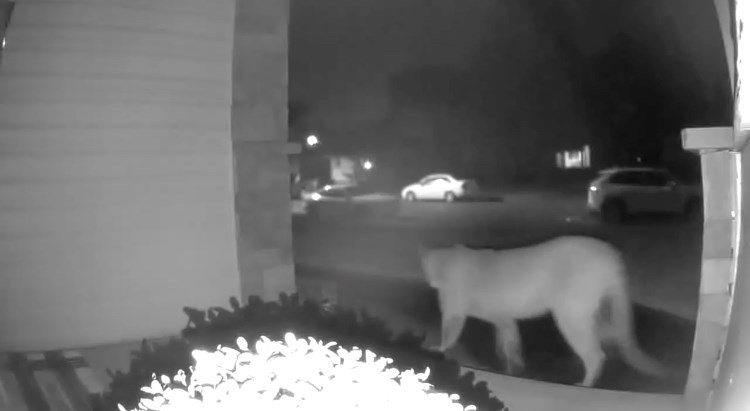The euthanization of a cougar spotted within city limits of Moose Jaw on Monday was a decision made in the interest of public safety, said a representative from Saskatchewan Conservation.
Bruce Reid, inspector and manager of the southwest region for Saskatchewan Conservation, said the animal was euthanized after over 24 hours of tracking sightings through the city. The decision was made with consultation from Moose Jaw Police and local conservation officers on scene.
“In this case, we decided we needed to move (the cougar) as quickly as possible from a place where it really shouldn’t have been,” said Reid. “My staff handled it very well, and the city police service did an excellent job.”
The cougar was first spotted on a doorbell cam on the 900 block of James Street around midnight on Monday. Police and conservation officers then responded to a second reported sighting around 8 a.m. in the back alley on the 100 block of Hochelaga Street West, where officers confirmed the sighting.
The cougar escaped officers and was reported again around 11 a.m. near King George School, but police could not confirm the animal was there when they responded to the call.
The cougar was next seen and reported in the early morning on Tuesday near downtown, where MJPS then tracked the animal using a drone, locating it hiding under a deck in the residential area on Redland Avenue, near the 1100 block of Main St. North.
At around 3:30 a.m., MJPS and conservation officers euthanized the animal after it attempted to evade capture.
“The number one factor (in that decision) is public safety,” said Reid. “That is a very large predator, (to) have in an urban residential setting for a 24-hour period, maybe longer, and public safety was the main concern.”
A number of factors were considered in the decision to euthanize the animal, said Reid, and all options were considered by conservation officers on the scene before deciding that euthanization was the most appropriate action.
Chasing the animal out of city limits was not considered a viable option, as large cats like cougars are elusive and difficult to guide in a specific direction. Tranquillizing the animal and transporting it elsewhere was also determined to be too risky for the situation and location.
“Tranquilizing animals does not go as smoothly as we see on television,” said Reid. “It takes four to seven minutes for the drugs to take effect and if the animal is worked up and excited, it could take longer. This cat had already escaped us once, and to have it escape and then hide so we are not able to find it [after it had fallen unconscious] would not be a good scenario.”
Reid said the cougar likely entered the city through one of the green spaces near James Street, like Spring Creek, or Thunder Creek valley or the Moose Jaw River Valley. He said the cougar was a young adult, likely displaced from its territory either by its mother or another larger cougar, forcing it to seek new territory.
“They try to avoid humans as much as possible, so the fact that this one was in an urban area where there’s quite a bit of activity gave us some concern,” said Reid. “It may have gotten confused, but once it had gotten into the city, to use that as a reason to not do anything wasn’t deemed wise.”
Cougars are a regular part of the Saskatchewan ecosystem, said Reid, as one of the three large predators present in the province. Sighting a cougar in this area is only unusual because the animals are usually very secretive and avoid large centres.
Cougar populations have been increasing over the last few years, but Reid said that does not pose a concern for the Conservation office or the state or the natural ecosystem.
“We’ve had very few domestic livestock reported missing, so they seem to stick to their natural habitat, with deer and small animals as their prey,” said Reid. “We’ve confirmed several have passed through the Qu’appelle Valley and the Moose Jaw River Valley, which would be a travel corridor for them.”
He also added that Saskatchewan has never recorded a cougar attack on a person, while other jurisdictions in Canada have.




